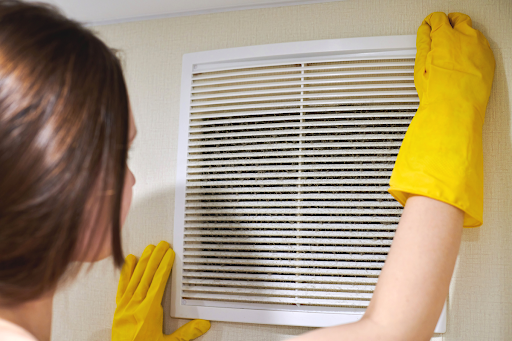Although you can’t see it, the air inside your home has the potential to be polluted with any number of contaminants. From dust mites to particulate matter, airborne pollutants can wreak havoc on your family’s health if you’re not careful.
Are you currently worried about your home air quality? It’s understandable. After all, it can be challenging to know which pollutants are traveling through your air ducts. Fortunately, there are a few ways to better understand which contaminants you’re dealing with. If you’re ready to start, let’s go over how to test the indoor air quality in your home.
Signs of Poor Indoor Air Quality
While you can’t actually see the pollutants in your home’s air, there are a few common signs to look out for. For starters, you’ll want to see if there’s excessive dust buildup around your air vents. This usually indicates that there could be many other pollutants — including pollen and mold spores — lurking in the air.
Keeping track of your health can also help you identify poor indoor air quality. For instance, constant allergy and asthma symptoms may suggest a significant amount of airborne contaminants. Other symptoms might include headaches, dizziness, and eye irritation. Now that you understand how to identify poor IAQ, it’s time to learn how to test air quality in your home.
Ways To Test Indoor Air Quality
It’s definitely not as easy to keep track of your home’s indoor air quality as you might think. Various factors — from your pets to the items you purchase at the convenience store — can harm your air. For example, volatile organic compounds (VOCs) can be found in various paints, cleaning products, building materials, and more. These VOCs and many other contaminants can create chaos inside your home without you even knowing.
When learning how to test the indoor air quality in your home, it’s important to know that different tests perform different functions. You might want to try using more than one test to fully understand which pollutants you’re dealing with.
Air Quality Monitors
If you want to test air quality in your home, consider the benefits of air quality monitors. These devices can be used to measure concentrations of VOCs, particulate matter, carbon dioxide, and more. Some more advanced monitors can measure other critical components, such as carbon monoxide and humidity.
There are many air quality monitors to choose from, so it’s usually easy to find one that meets your house’s specific needs and price range. Most have displays that are straightforward to read and understand, while others can be monitored straight from your smartphone.
Radon Tests
Don’t overlook the significance of radon when looking to test the air quality in your home. Did you know that radon — a naturally occurring, colorless, and radioactive gas — is the second leading cause of lung cancer in the United States? The good news is that you can use store-bought tests to monitor this dangerous airborne contaminant.
There are two radon test kits available: short-term and long-term. Short-term tests usually take 90 days to complete, while their long-term counterparts tend to take a few months. No matter which you prefer, you can purchase both varieties online or at home improvement stores.
Carbon Monoxide Detectors
Carbon monoxide (CO) is another dangerous contaminant that is difficult to identify. This colorless and odorless gas can cause many health problems, such as headaches, shortness of breath, and dizziness when present at high levels. In the worst possible case, carbon monoxide poisoning can even be fatal.
Fortunately, carbon monoxide detectors can help you avoid an unwanted health scare. These devices are helpful in many instances, but they are certainly recommended if you have systems or appliances that run on gas, such as a water heater.
As you learn how to test the indoor air quality in your home, you may notice that many products, such as carbon monoxide detectors, are fairly cheap and convenient to use. This is excellent news since you don’t have to go out of your way — or off budget — to know which pollutants are swimming in your air.
Professional Assessments
Monitors and detectors are incredibly useful — especially if you’ve never measured the air pollutants in your home. However, if you’re looking for the best way to test indoor air quality, you will probably want to schedule a professional assessment.
During an air quality assessment, an experienced technician will perform tests to detect dangerous levels of airborne contaminants. Once you know which pollutants are in your home, you can make a practical and knowledgeable plan to remove them. In many cases, air purifiers and improved ventilation are helpful and effective solutions. However, the right solution will depend on your needs.
Improve Your Home’s Air Quality Once and for All With Tempo Air
When learning how to test the indoor air quality in your home, you will see that there isn’t only one solution. There are many products and services that you can benefit from. If you want to test air quality in your home with the assistance of a professional, turn to Tempo Air. Our air duct cleanings and air quality assessments can make your indoor air healthy once again. Contact our Frisco, TX, air quality experts today for more information!


